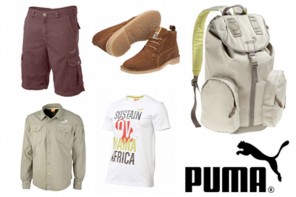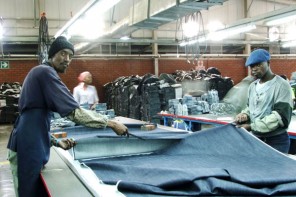Written by: Giulia Simolo
Having a greener wardrobe is more than taking note to buy clothing that’s eco-friendly. It’s also about ensuring you are not bagged down with excess clothing that is going to waste at the back of your closet.
Your wardrobe should never become your personal landfill, overflowing with various items and becoming cluttered. Rather, it should be a special part of your bedroom where your individual style and eco-savviness come to life.
Here are ways to greet 2011 with a more organised, energy-efficient wardrobe.
Eye on space
Ever feel that you just don’t have enough space in your wardrobe? This is a common complaint. One way to maximise your space is to ensure that for every two or three new items of clothing you purchase, you get rid of one that you already have – and that you don’t get wear out of anymore. This keeps your wardrobe running smoothly and recycling itself without it becoming overfilled.
It’s also a must to ensure that you store your clothing on correct hangars – remember that not just any old hangar will do. Wood hangars are great because they keep your clothing in shape, but cotton hangars are better for more delicate clothing. Just be sure that whichever hangar you choose, it´s sustainably sourced.
Categorise your closet
It always helps to ensure your clothing is organised. This means more than just having every item on a hangar or on shelves. Categorise your clothing according to how much wear you get out of each item as well as which ones are your favourite pieces. For instance, your ‘Best Pieces‘ could be grouped together, followed by ‘Classic Pieces‘ (that are versatile) and ‘Regulars.’ A system like this enables you to find items quicker as well as see everything in your closet without losing sight of certain pieces that get forgotten.
Don’t over-splurge
You might find that you spend a lot of money on items of clothing you consider great pieces when you buy them, but then rarely wear. Doing this means that you’ve not only wasted money, but you’ve added more waste to your closet. Not good. If you’re going to splurge on an expensive item of clothing, make sure that it is a timeless piece that will bring you much wear over more than one season. These classics will also give you more mix-and-match opportunities in your wardrobe.
One of the main things to remember when organising your wardrobe is that you want it to keep up to date with your image and be useful to you. You want the majority of your wardrobe to reflect clothing that is versatile and appropriate to various occasions.
Give it away
Take an objective look at what lies in your closet and ask yourself: Are there some items of clothing you have not worn in three or more months? Are there some clothes that you think are fashionable but you never feel comfortable wearing them? Or perhaps they just don’t seem to match any other items? Stop holding onto clothing you don’t wear or that doesn’t make you feel good, because this defeats the purpose of your wardrobe. Instead of throwing them out in the trash, donate them to charities or hospices. There are many organisations around you that are always looking for unwanted items. Here is a site that features various charities in South Africa.
Swap it
De-cluttering your wardrobe doesn’t have to feel like a chore; it can actually become a fun task if you make it a group effort. Show your friends any clothing that you’re no longer interested in and see if they have any unwanted treasures of their own. You might end up finding clothing for free and this is a fun way to recycle your wardrobe.
Clothing makeovers
You might be able to add some creative flair to old clothing in order to make it breathe new life, but if you’re no closet fashion designer there are still ways you can use those unwanted items. Try to turn them into other things, for instance, an old t-shirt could become a cleaning cloth, or an old shirt could be made into a pillow case. Think in practical ways to see how you could benefit from clothing that is sitting in your closet collecting dust.
Seasonal savvy
When you’re no longer wearing those winter clothes for a while, ensure they don’t take up space in your closet or overcrowd your summer items. Ensure that clothing for the current season is in quick view as this saves you time. Pack next season’s clothing in clear bags to protect them from dust and dirt, thus increasing their life-span so that when next winter comes, you won’t find you have nothing to wear. This will also prevent you from throwing away clothing and having to purchase more.
Sew what?
You might not be a tailor, but it’s always a good skill to know how to repair basic damage on items of clothing. Think popped buttons and too-long hemlines, for instance. Doing this makes your clothing last longer and saves you the trouble of having to get items repaired by a professional- or rushing out to buy more clothes. With every item of clothing that is in your wardrobe, ensure that it’s in its best condition and try to get as much use from it as possible.
The liveeco team









